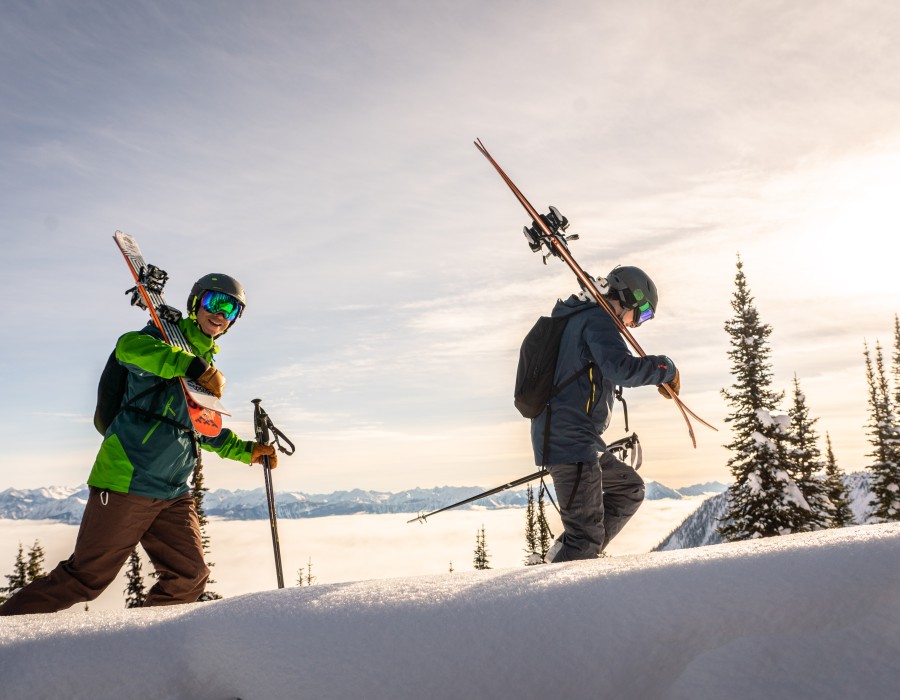1. What is Cat Skiing in BC?
Cat skiing in British Columbia (BC) is an exciting winter sport that offers skiers and snowboarders access to untouched, deep powder snow. Instead of using traditional ski lifts, participants are transported up the mountain by a snowcat, a specialized vehicle designed for snow travel, allowing them to explore remote and pristine areas of BC’s backcountry.
2. Where can I go cat skiing in British Columbia?
BC is home to some of the world’s best cat skiing operations, with popular destinations including areas around the Selkirk and Monashee Mountains, Kootenay Rockies, and Cariboo Mountains. These regions offer spectacular scenery and deep, consistent powder that attracts skiers from around the globe.
3. Do I need to be an expert skier to try cat skiing?
No, you don’t need to be an expert skier to enjoy cat skiing in BC, but it’s recommended to have some experience with skiing or snowboarding in powder. The terrain can be challenging, so intermediate and advanced skiers will find it more enjoyable. Most cat skiing companies will group skiers based on skill level to ensure everyone has a great experience.
4. How is cat skiing different from heli-skiing?
While both cat skiing and heli-skiing offer access to backcountry terrain, the main difference is the mode of transportation. Cat skiing uses snowcats to transport groups of skiers up the mountain, whereas heli-skiing uses helicopters. Cat skiing tends to be more affordable and offers a more relaxed pace compared to the fast-paced experience of heli-skiing.
5. What should I bring for a cat skiing trip in BC?
When heading out for a cat skiing adventure in British Columbia, you’ll need standard ski or snowboarding gear, including skis or a snowboard, boots, and outerwear. Many companies provide avalanche safety equipment such as beacons, shovels, and probes. It’s also essential to bring extra layers, snacks, and hydration for a full day of skiing.
6. Is cat skiing safe?
Cat skiing BC is generally safe, as most operations have experienced guides and strict safety protocols in place. Guides are trained in avalanche safety, and snow conditions are carefully monitored. Participants are provided with avalanche gear and given a safety briefing before heading out into the backcountry.
7. When is the best time to go cat skiing in British Columbia?
The best time to go cat skiing in BC is between December and April, with the deepest snow usually found in January and February. Each month offers unique conditions, with earlier months providing lighter, drier powder and later months offering warmer temperatures and longer daylight hours.
8. How much does cat skiing in BC cost?
The cost of cat skiing in BC can vary depending on the location and duration of the trip. Single-day trips typically range from $400 to $700 CAD, while multi-day packages can go up to several thousand dollars. Some packages may include accommodation, meals, and other amenities.
9. Can I rent equipment for cat skiing?
Yes, many cat skiing operators in BC offer equipment rentals, including powder skis or snowboards that are specifically designed for deep snow. Be sure to check with the operator beforehand to arrange rentals if needed.
10. Why choose BC for cat skiing?
British Columbia is renowned for its consistent snowfall, vast wilderness, and stunning mountainous terrain, making it one of the best places in the world for cat skiing. With top-notch operators and incredible powder conditions, BC offers an unforgettable experience for anyone looking to explore the backcountry.
This FAQ covers the essentials for anyone curious about cat skiing in BC and looking to learn more about this thrilling winter sport.





Comments